
Table of Contents:
– Background
– How the 5-25×56 LR differs from the ZP5 5-25×56
– Look and Feel
– Reticle Options
– Comparative Optical Evaluation
– Mechanical Testing
– Summary and Conclusion
– Your Pro and Con Breakdown:
– Testing Methodology
Background:
I think it is most interesting to start the story of the Minox ZP5 before the ZP5 and follow for a bit the lives of some of the folks who designed it. We will start in 2005, when Schmidt & Bender released the 5-25×56 PM II riflescope. This optic set a totally new standard for riflescope performance. As hard as it is to imagine now, at that time the U.S. was mostly still in the 1970s when it came to long range shooting. The standard feature set that we all now use, including first focal plane and mil/mil, was shockingly uncommon with really only U.S. Optics and S&B even doing it. The 5-25×56 PM II was not just that, though: it was a whole new level of performance when it came to the optical design and was really the first alpha tier optic. Instead of just rolling on from that, S&B made the mistake of not keeping the optical engineers who designed that scope happy and so a few of them went off and started their own company, Optronika, in 2008. They went on create a number of competing alpha tier optics by partnering with or designing for a number of companies. They first did the Premier Heritage scopes that would sort of become the Tangent Theta scopes. In 2014, Optronika was offered an interesting deal by Minox: a merger where they would essentially became the Minox sports optics division, handling the design and manufacture of its scopes. They accepted and went on to design and manufacture both Minox and later also rifle scopes for its parent company, Blaser Group. Obviously this gives the ZP5 5-25×56 something of a pedigree, as the previous two 5-25×56 designs (or three, depending on how you look at Premier / TT) produced by the folks who designed the ZP5 have an excellent reputation for optical performance.
How the 5-25×56 LR differs from the ZP5 5-25×56:
This year Minox released a second 5-25x56mm scope with features similar to the ZP5, which they are calling the 5-25×56 LR. I did a review of that scope earlier this year and it is worth mentioning the difference between the two products for the benefit of those who did not read that review. While the concept of the LR is clearly to be a lower cost option for those looking at scopes with the feature set of the ZP5 5-25×56, inside it is not simply a ZP5 with lower grade glass. The optical designs for the LR’s eyepiece and erector came not from the ZP5, but from the former ZE series altered to accommodate a reticle in the first focal plane. The adjustments for the LR are the same as those in the ZP5, and its objective assembly and focus are a new design. As for the glass in the LR, it is different from that in the ZP5 but has the same coatings. So, while side-by-side the LR and ZP5 are near identical in appearance, inside there is a good bit of difference in the optical design though the adjustments are the same. Both scopes are assembled in the same facility in Germany and both bear the “Made in Germany” marking.
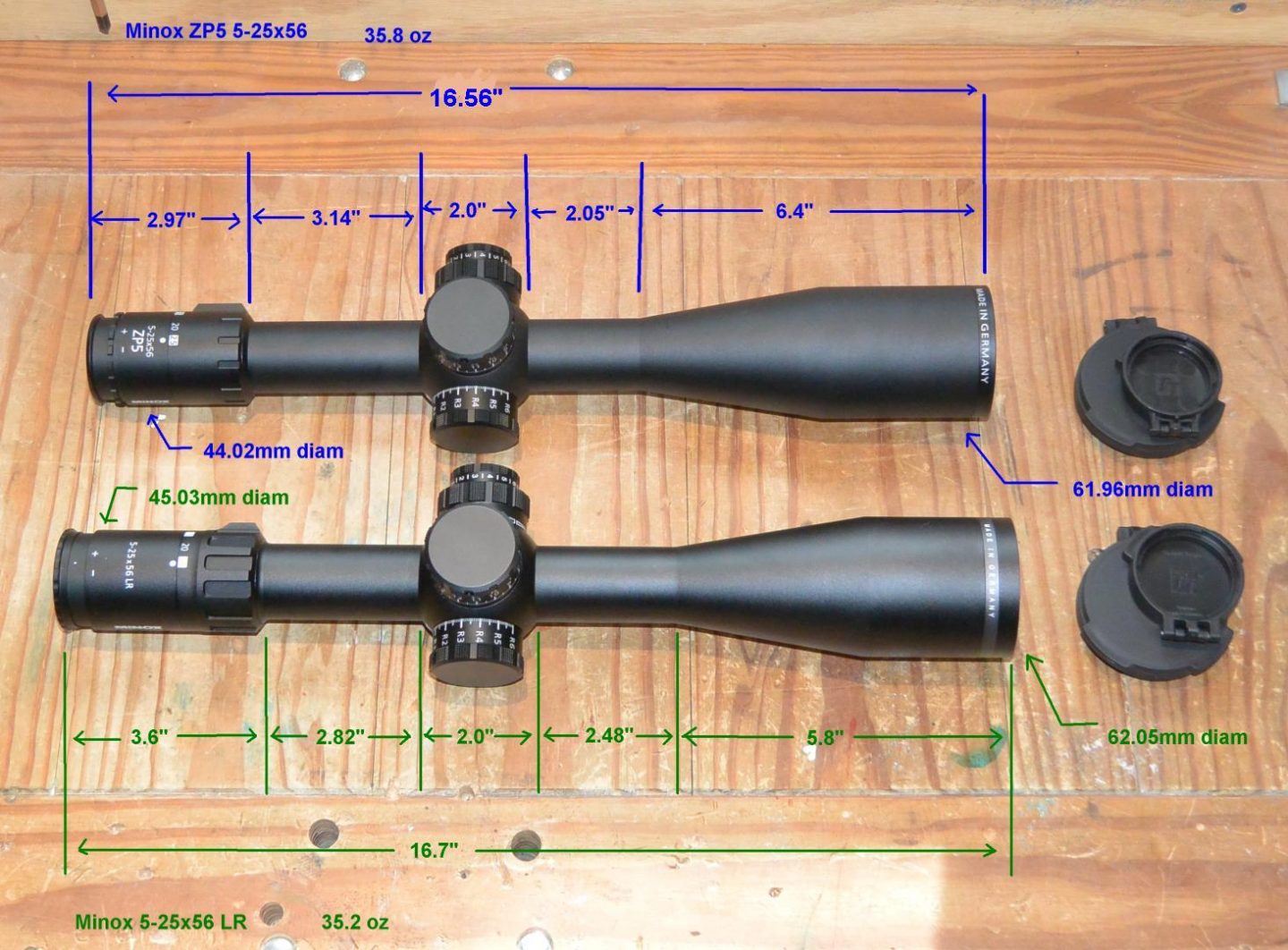
Look and Feel:
The Minox ZP5 5-25×56 and the 5-25×56 LR are remarkably similar in appearance. They have near identical lengths at 16 9/16″ and similar weights at 35.2oz (LR) and 35.8oz (ZP5). These physical sizes and weights are about par for the course when it comes to higher cost scopes in this magnification range. Both Minoxes (Minoxen?) are very similarly styled with an integrated low-profile throw lever on the eyepiece, “Made in Germany” prominently displayed on the objective, and identical adjustment knobs and parallax / illumination knobs. The only substantial difference in appearance is that the ZP5 has a slightly shorter eyepiece and it includes a focus lock whereas the LR’s eyepiece does not.
Minox’s adjustments are of the non-lifting type wherein the knob does not raise and lower with adjustment. Like many other designs of this type, Minox includes a turn indicator. In this case, the turn indicator consists of two holes in the ring below the adjustment which shift from black to white on the second turn. This transition is also quite tactile, so you won’t miss it. Turrets are marked 0-14 and, above those markings, 15-28 for the second turn. Both scopes have a stated elevation of 28mil, so there is no third turn. As is common, the zero stop allows a small amount of adjustment below the zero. The knob size on these Minox scopes is both a little smaller in diameter and shorter than other 15mil knobs I have seen, making for a more compact package. Windage knobs are marked 6 mils in each direction, though they will go a little further each way before hitting the stop. Neither elevation nor windage knobs are locking on either model. On both the elevation and windage knobs, the zero stop sets in the most common way – with two set screws you loosen to allow the knob markings and stops to be repositioned to zero once scope has been zeroed. Knurling on the knobs are a little on the sharp side and dig in a bit if the knobs happen to be on the stiff side. I say, ‘happen to be’ because, across two scopes, the force required for knob movement is not the same on any of the four knobs in question. The lightest, which is the LR’s elevation knob, is followed by that scope’s windage. Still stiffer is the ZP5 elevation and the ZP5’s windage is stiffest of all. For this Goldilocks, the LR’s windage is the right temperature, and I suspect most will either favor that or the ZP5’s elevation. I am baffled as to why there is such tremendous variation on the force required to rotate the different adjustments across these two scopes featuring identical adjustment knobs. The lightest requires only a light two-finger grip, but the stiffest requires such a substantial grip that the knurling on the knob becomes uncomfortable. They are just not close. We’re talking about a range of at least three times the required force from lowest to highest.
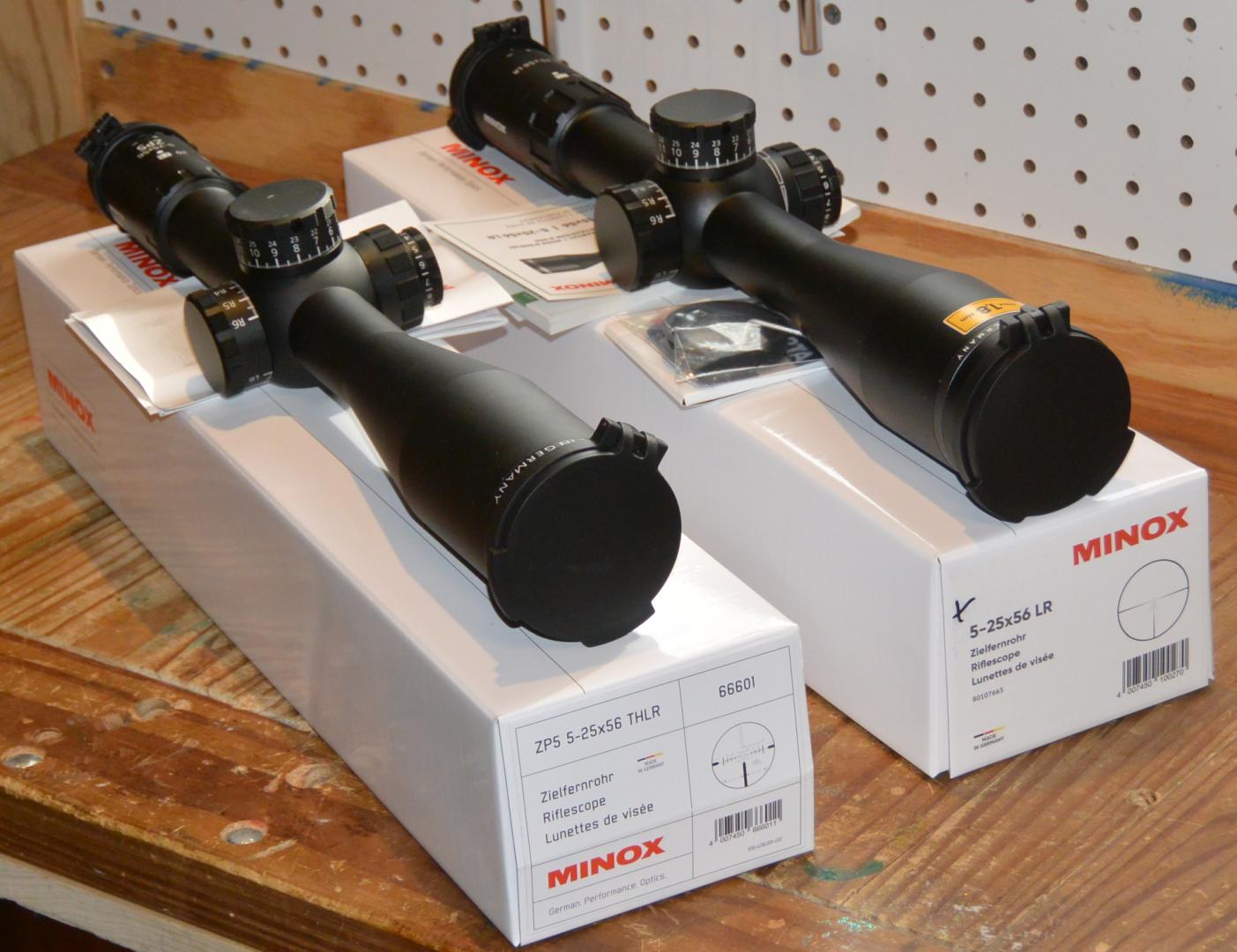
The illumination and parallax controls, on the other hand, are similar in force across both and in a good feel range. The combined illumination / parallax knob is well designed in that the parallax part is much larger, and therefore easy to adjust without also inadvertently turning the illumination on. In the case of both of these scopes, only the center of the reticle is illuminated and, as with most other long range high-power scopes, this illumination is not daytime bright. Both scopes feature 11 brightness settings on the illumination with an off position between each. In each case, they start off far too dim to see with the naked eye. I suspect this is for NV use and they seem to hint at the same in the manual without actually saying it. The ZP5 illumination has an illumination auto shutoff after 3 hours of continuous use, but the LR has no such failsafe. The power ring is a little lighter on the LR than the ZP5 but both are in a good range and, given the different optical designs, I really wouldn’t expect them to be the same anyway. Neither scope showed a zero shift with parallax or power adjustment.
Finally, the fit and finish on both the ZP5 and the LR are perfect, as you would expect, without any tool marks, unevenness, or blemishes.
THLR Reticle:
Minox currently makes the ZP5 5-25×56 in three reticle choices. These are the MR4, MR5, and THLR. I will be focusing most of this section on the THLR because that is both the reticle included in my test scope and also a unique reticle, the function of which will require a good deal of explanation. Minox’s other two reticles designs consist of common elements and I suspect few users will have trouble understanding them. The MR4 reticle is Minox’s take on the now ubiquitous .2mil graduated floating dot center Christmas tree reticle. The MR5 is a traditional mil ladder design with the addition of a fine mil scale in the lower right quadrant and Minox’s AQRAS rapid ranging stadiometric feature in the lower left quadrant. I am a fan of rapid ranging features and this is one of the better scales I have seen, though I do wish it had a few more bars so you could range a bit smaller stuff a bit further out.
The THLR reticle present in my ZP5 5-25×56 test scope is a design by Thomas Hauglands. He does the THLR.NO website and a bunch of YouTube instructional videos. As you may have surmised from the “.NO”, he is from Norway. As such, his videos contain some rather breathtaking scenery. If photos from the lush green range I shoot at here in Ohio makes you western guys a little jealous, you may not want to see where he shoots. Watching a number of Thomas’s videos, I found him to be generally knowledgeable. Of most interest, however, were the differences between the practices and equipment most common here in the U.S. shooting community and what is used and done in the old world. He has a video where he cross country skis across the frozen tundra to hunt tiny white birds at distance with a precision rifle. That was really something else.
The THLR reticle is advertised as a hybrid hunting / precision rifle reticle. Many of the features are optimized for 0-500yd shots and for shots taken off-hand on low magnification, but it has a mil base such that it can be used with the long range shooting techniques familiar to many on this site. The THLR reticle consists of six main elements:
1) Fine milling scale to use in traditional rangefinding calculations and for shot corrections / spotting.
2) Thick outer posts for off-hand shots taken quickly at low power.
3) Stadia-based rapid rangefinding gauge measuring 300-1000M and based on a ~.5m wide silhouette target
4) Light, Moderate, and Strong windage brackets optimized for 4-500M shots with a 6XC. Note that the brackets themselves are on the main horizontal crosshair whereas the labeling above is sort of just a reminder.
5) An aim short, aim long and central square feature. 6) A main crosshair with floating dot and mil graduations both on it and two rump christmas tree lines below.
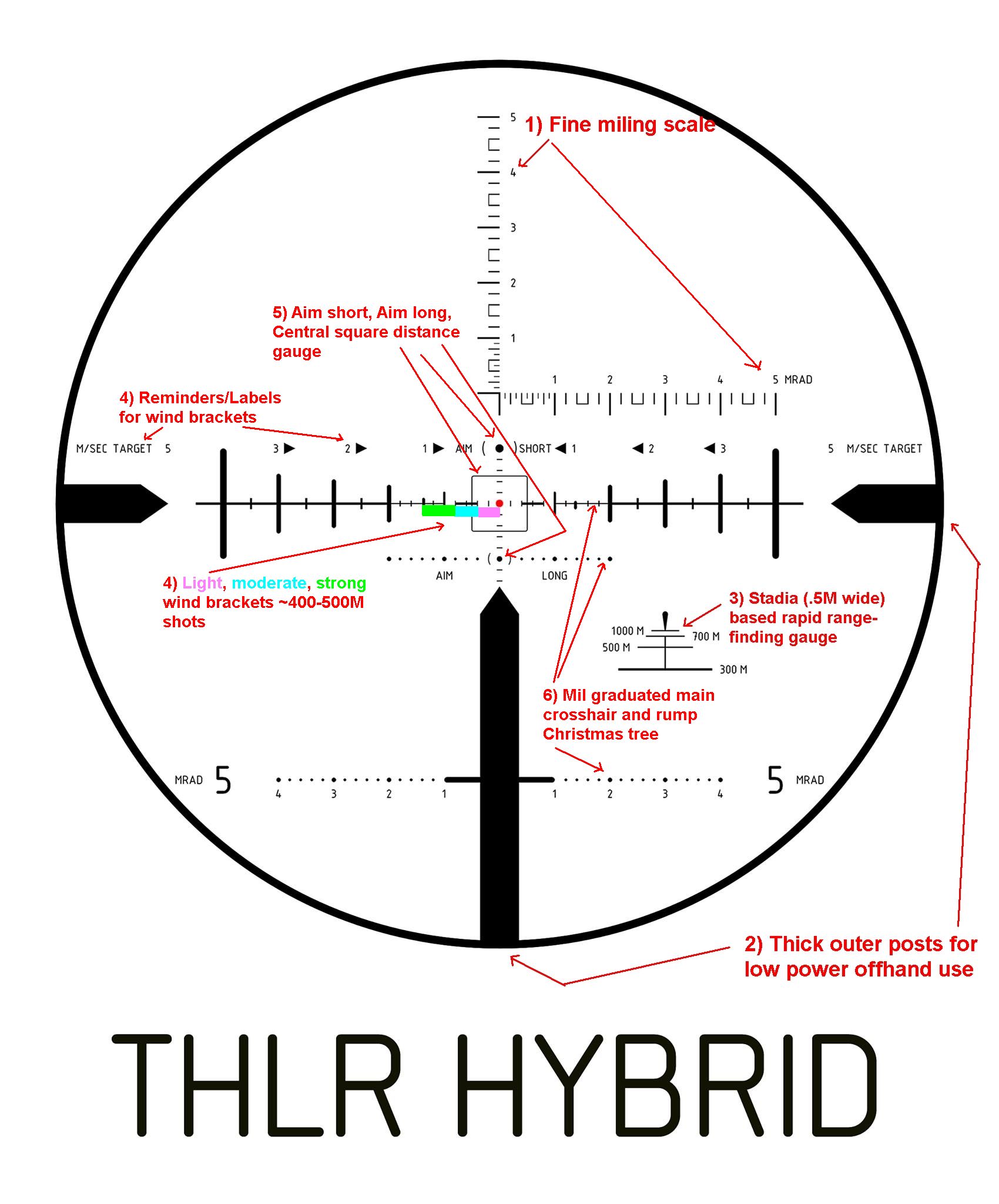
I’ll talk first about using this reticle within the operating system most of us use for shooting long range. That is, dialing our drop, holding the wind, and adjusting follow up shots based on measuring observed misses or off-center hits using a mil scale on our reticle. In this capacity, I found (1) the fine milling scale excellent, though I would have pushed it off-center 1 mil to the right to give more clear area in the center to observe trace. The thin line width, spacing scheme, number labels, and lack of a central line connecting them all were all appreciated. I found this milling section excellent both for spotting others’ rounds and for measuring your own adjustments as well. The rest of the reticle was a bit mixed, however. The main crosshairs (6) are mil and so were useful for wind holds, but I did not like the switch from .2 mil graduations to .5 after 2 mils out. I see that this was done partially to interface with the windage brackets (4), but I don’t like reticles to switch graduations and it could have been .2 all the way out, no problem. I also did not like the lack of labels for the number of mils from center. I found the center dot a little large when trying to be as precise as possible. The center square was an odd distraction and added to the feeling that there was too much in the center of the reticle generally. As for the two lines of rump Christmas tree below, one is at 1 mil, which is really closer to the main crosshair than I really need a tree and certainly not one a full 2 mils wide. The other feels very far indeed at 5 mils and has the oddity of being far enough down to have its center well within the roughly .7 mil wide thick post. I don’t have much use for either part of this rump of a Christmas tree. My overall takeway is that the THLR works with our typical long range shooting techniques but outside of the fine milling scale, it’s OK at best in that capacity.
As for the THLR’s unique features, I will start with the .5 mil at distance stadia gauge (3). I am a general fan of rapid ranging features. In real world situations, rangefinding is a huge part of success and is far too often ignored in reticles. That being said, stadia based rapid rangefinding features work better with vertical dimensions than horizontal ones because the things you range tend to align themselves vertically due to gravity, but not in any particular horizontal direction. Given the shape of this stadia gauge, it could have easily had a vertical rangefinding aspect as well as the horizontal one. It is even almost the right height as implemented. I had to measure it to find that it was not and I don’t see any good reason for the oversight. Lastly, Minox actually has its own “AQRAS” stadia-based rapid ranging scale in the MR5 reticle which appears to be better in most respects than the gauge in the THLR while being tremendously more versatile.
Moving on to the windage brackets (4) and aim short aim long features (5). These were the most difficult features for me to understand and it took a number of videos for me to finally figure it out because I was looking for them to be far more general than they are. Both features are really optimized for shooting fairly fast cartridges (optimized for 6XC) at targets around 500 meters off. The windage brackets (4) are a bit confusing because you might think the arrows are where the windage holds are but they are actually just labels reminding you of about lightly marked sections on the reticle itself. I have highlighted this on my labeled image. These sections contain the holds plus a margin of error for 1, 2, and 3 meter per second wind at 500 meters with the 6XC. At that same 500 meters, the .5mil wide silhouette target referenced in the stadia feature would just fit in the square in the center of the reticle (5). Presuming you had already dialed your 500oM dope, if the silhouette is too large for the gauge, you aim at the ‘aim short’ firing point, if too small you aim at the ‘aim long’ long one. Obviously, these are really quick and dirty firing solutions at a target that is truly massive for the range it is at. The typical targets where I shoot tend to subtend .2mil – .5mil at range and I understand this to be similar to the size range typical in PRS type competition as well. A full mil or larger is almost unheard of and what few of them there are tend to be waterline plates for checking dope not targets you would get points for hitting in competition. Simply put, I don’t like either the windage bracket or aim short / aim long features on the THLR reticle. Even if it was not hard for people to figure out their function, they still take up far too much real estate to justify their very narrow function.
So, in the end, I found the THLR a usable reticle for utilizing the techniques we typically use in long range shooting, but it is only passable at this, not great, and I did not find the features unique to it to be very useful.
In my testing the reticle measured the correct size though it was canted ~.5 degrees (.15 mils in 16mils travel) clockwise relative to the adjustments.
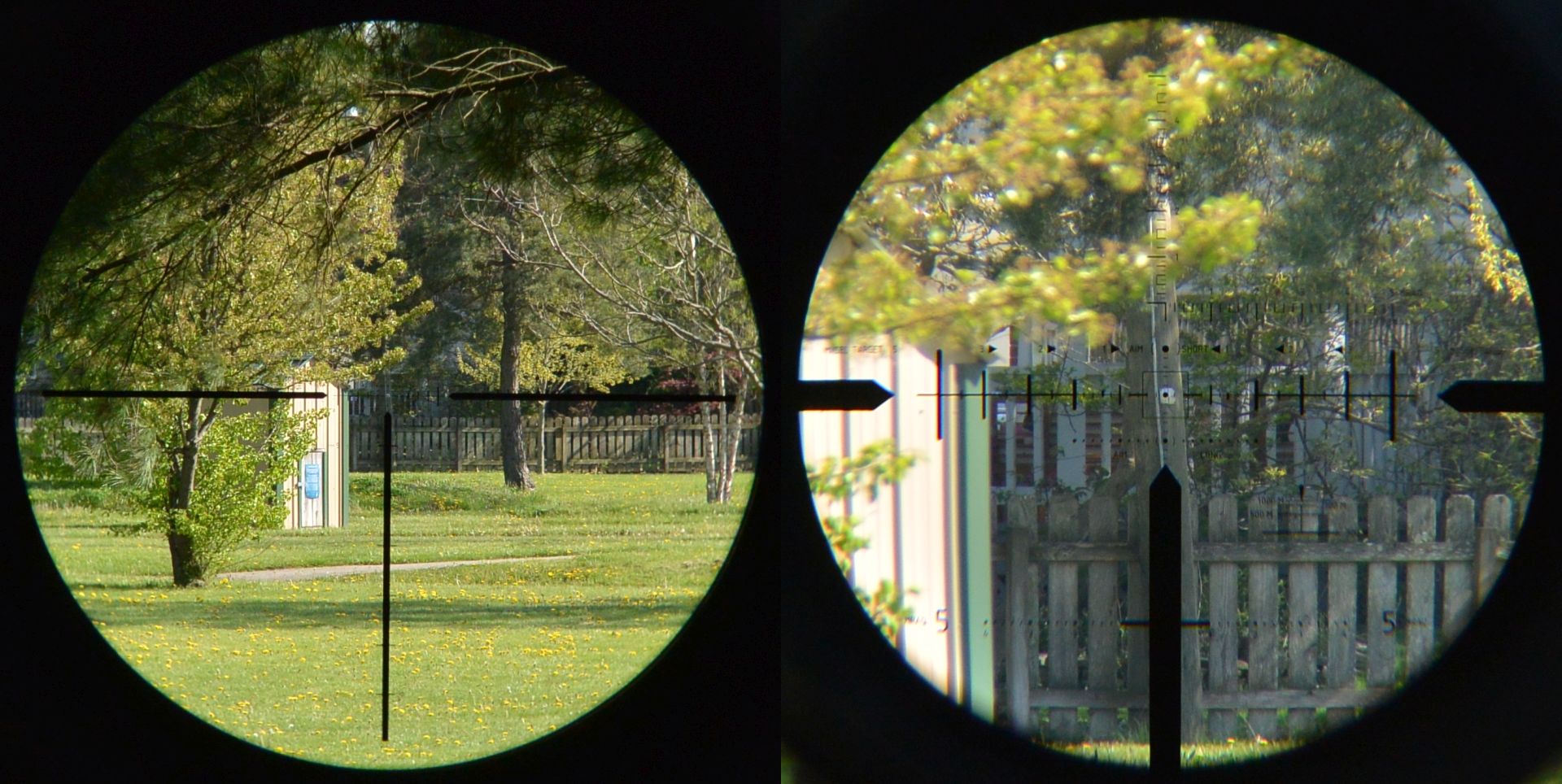
Comparative Optical Evaluation:
The review of the Minox ZP5 5-25×56 this year is best seen as a companion to the Minox 5-25×56 LR review I did earlier this year. As such, it is not part of a series of alpha class scope reviews and, for that reason, I don’t have a bunch of ~$3-4k stuff on hand to compare it to. What I do have on hand is the ~$2k scopes for this year’s series of reviews of scopes in that price range including the Minox 5-25×56 LR, Sig Sauer Tango 6 5-30×56, and Leupold Mark 5HD 5-25×56. When it comes to scopes closer in price to the ZP5, I have the ZCO420 I purchased last year and a U.S. Optics SN-3 3.2-17x that dates back a number of years though I believe it is the same optical design as their current FDN 17x model. Ideally, I would have liked to compare the ZP5 to some of its progenitors, such as the S&B and TT, as well as more of it’s price competitors such as the ,Steiner, and Kahles, but that was just not possible.
In terms of overall performance, the Minox ZP5 5-25×56 and ZCO ZC420 were a clear step above the Leupold Mark 5HD, Minox 5-25×56 LR, and U.S. Optics SN-3, which were all a step above the Sig Tango6. For the most part, this is expected based on the price differences between the optics. Relative to the two best performing of the $2k scopes, the ZP5, and ZC420 for that matter, tended to offer minor advantages in most performance metric, followed by a substantial win in the one important category each was weak on (FOV for the Leupold and DOF for the Minox LR). The ZP5 itself did not have a weak metric, performing quite well on all.
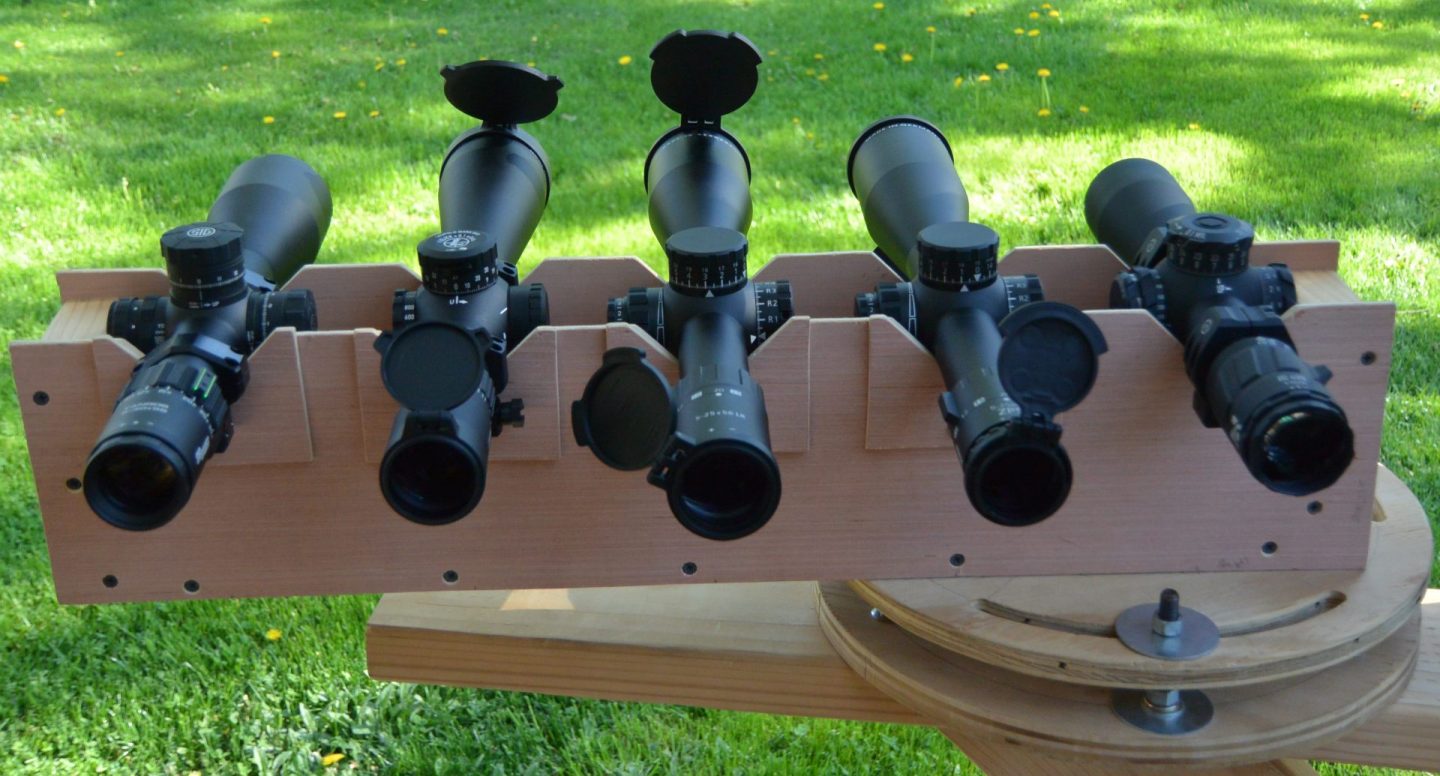
The comparison between the ZP5 5-25×56 and the ZCO ZC420 was a close-run race. As a comparison with the ZCO, the Minox fared far better than the S&B PM II 3-20×50 I had previously compared with that optic, as the S&B had displayed substantial problems with chromatic aberration and the Minox did not have substantial issues in any area of optical performance. Instead, in most areas of performance, both the Minox ZP5 and the ZCO performed well and judgment calls were quite close. I narrowly preferred the ZCO on resolution, chromatic aberration, contrast, and color rendition. The ZCO had a more noticeable lead on depth of field and field of view though the ZP5 was still a good performer on these metrics. I should note here that the ZC420 I am using is not the direct competitor to the ZP5 5-25×56 and the FOV comparison between the directly competing two models might go down differently. The ZP5 has a number of different FOV statistics floating around online and some of these are better than the numbers listed for the ZC527. All I know is how the ZP5 5-25×56 compared to the ZC420 at similar magnifications, not how it would compare to the larger ZCO. I had no preference between the ZP5 and ZC420 on pincushion / barrel distortion or on edge-to-edge clarity, and I narrowly preferred the ZP5’s eyebox, though both scopes’ were fine. The ZP5’s best areas of performance relative to the ZCO was in stray light handling, where I was able to induce some flare in the ZCO, and low light performance, where the 56mm ZP5 had an easy time with the 50mm ZCO. In both of these areas the ZP5 was clearly preferable to the ZCO.
If you are interested specifically in comparing the ZP5 to its less expensive stablemate, the 5-25×56 LR, expect the ZP5 to be a little better on almost all aspects of optical performance except depth of field and stray light. The DOF of the ZP5 is tremendously better than the LR, which performs objectively poorly on this metric. On the stray light handling, the ZP5 is quite excellent, whereas the LR is just OK. In practice, the possibility of seeing trace through the ZP5 in conductive conditions is going to be a significant advantage for the higher cost optic. I suspect no conditions would be sufficient to see trace on the LR. For the same reason, the ZP5 will greatly excel the LR on timed competition stages where you can’t really adjust the parallax between shots.
For me, the takeaway from the optical testing of the ZP5 5-25×56 is that it lives up to both its heritage and price point well. This scope is quite well designed and very balanced when it comes to its performance across different aspects of optical design.
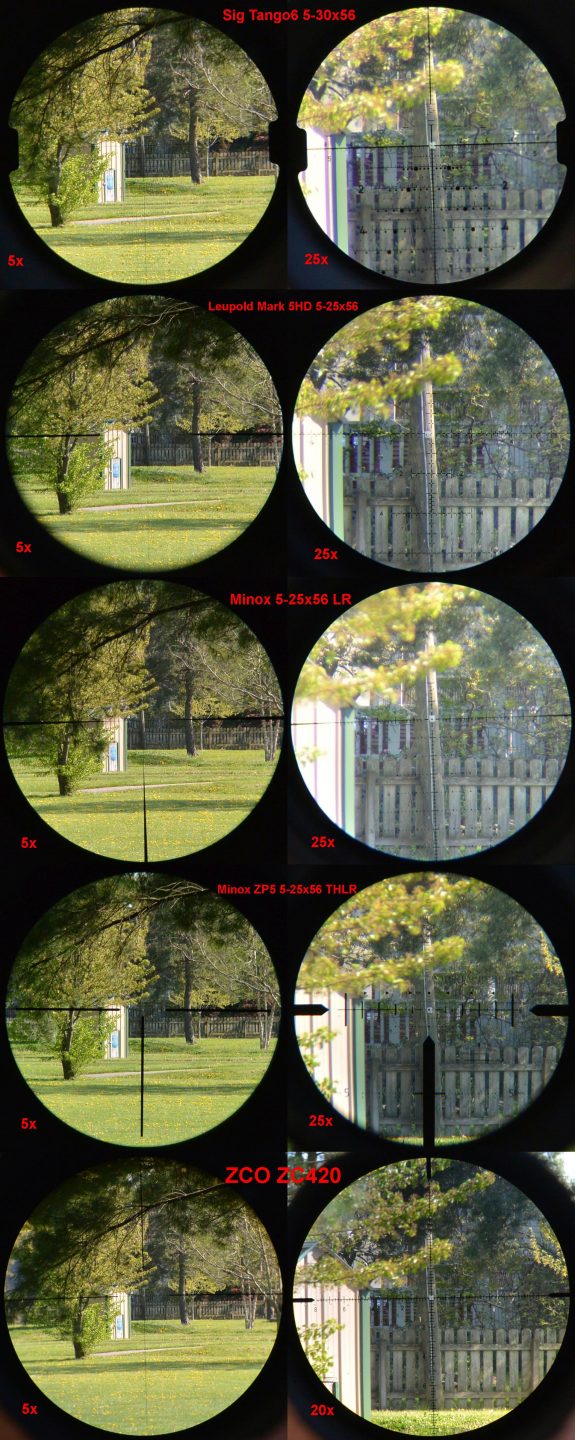
Mechanical Testing:
The mechanical performance of the Minox ZP5 5-25×56 I tested was a little better than the Minox 5-25×56 LR recently reviewed. This is despite the adjustments being identical to drawing and gives me an opportunity to highlight that there is typically more example-to-example variation in adjustment tracking and behavior than there is in optical performance. Of course, I, and most other reviewers only test one example and the likelihood is yours will vary some from any one that I happen to test. For this reason, the Hide keeps a running list of the scores of scopes tested in Frank’s classes. This can be helpful as it contains more examples, but keep in mind that changing the QC standard from say +/- 3% adjustment magnitude to +/-1% is quite easy for a company to do and because of that, even those numbers might not actually reflect current production. Certainly, I have noticed scopes in general getting much tighter in QC in the past few years. More than half the scopes tested last year for instance, had adjustment magnitudes rated at 100%.
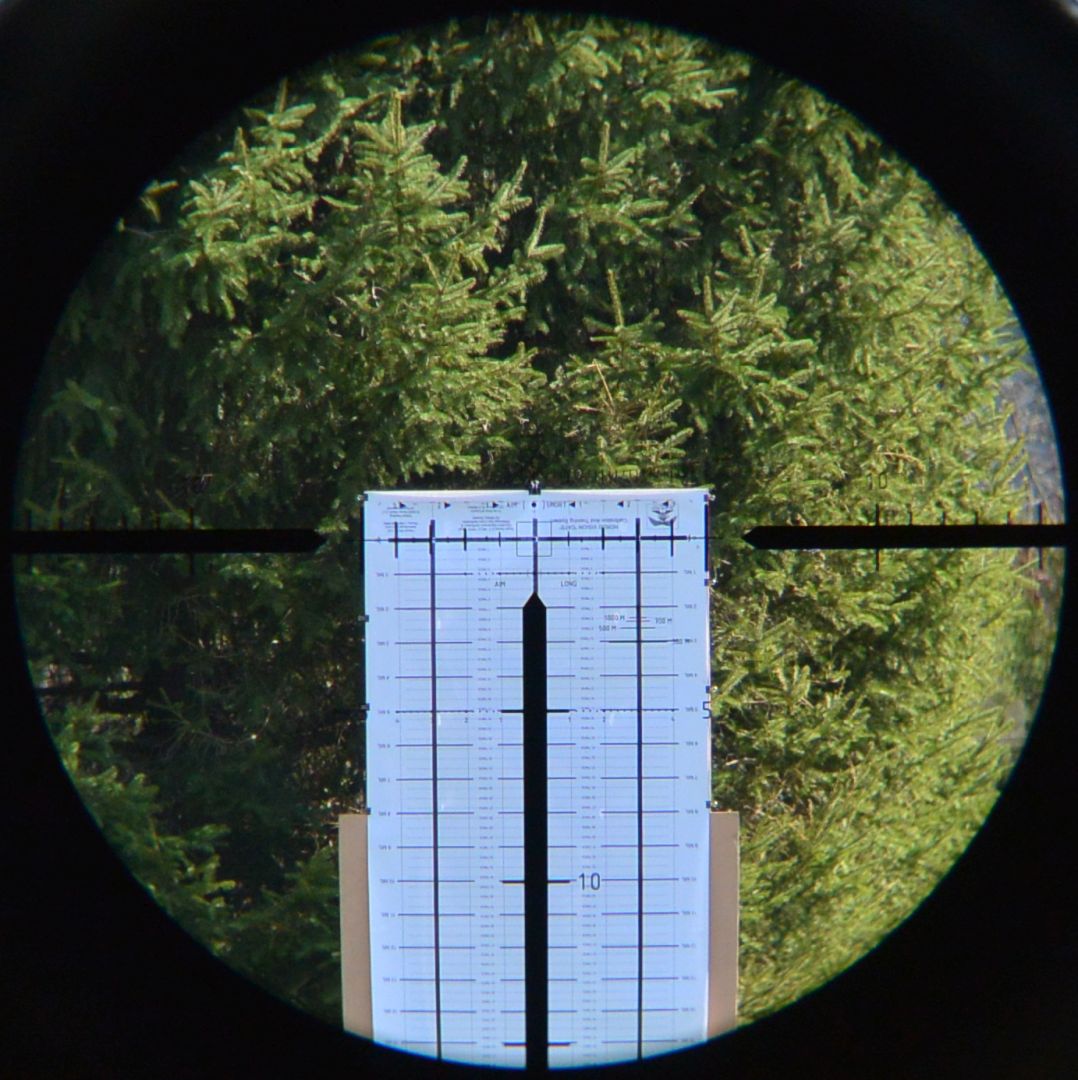
One thing I suspect will not vary from example to example of the ZP5 is what I will call spline slop. All scopes that have either a pull up to unlock / down to lock knob or a non-rising elevation knob, as this one does, have a spline connecting the knob to the actual adjustment plunger. Because the spline has to have clearance to slide, there is always some slop in such scopes. Often, the magnitude of this necessary slop is far too small to measure, but on others it is quite noticeable. The slop manifests itself as the scope’s internals being in a different position at the same number on the knob when the scope was adjusted up to that number than if it was adjusted down to that number. For instance, you might adjust up to 5.0 mils from zero and have moved the reticle 5.0 mils on target. Then you shoot further out, say to 10 mils, after which you go back to the target that was at 5.0 mils, but this time you are coming down from 10 mils. If you have .1mil of slop in the system, you will now find yourself at 5.1mils on the target and not 5.0 as before, even though the knob will read the same 5.0mils as before. This can be an issue as people usually adjust down to zero but up from there to most of their shooting solutions. Because of the change in direction, the slop error will be added to any such solutions as a matter of routine. The error can be totally eliminated by a shooter who becomes habituated to it and is quite careful to always adjust to the solution from same direction regardless of situation. For instance, if the shooter always goes up to the solution, he will turn down past zero each time before going up to it and when he wants to fine tune down .1 mil, he will go down .2 mils and back up. Both the Minox ZP5 5-25×56 and the Minox 5-25×56 LR recently reviewed had a spline slop magnitude of .1mil. I think it is likely that all Minox scopes with this turret design have this same or quite similar .1mil spline slop.
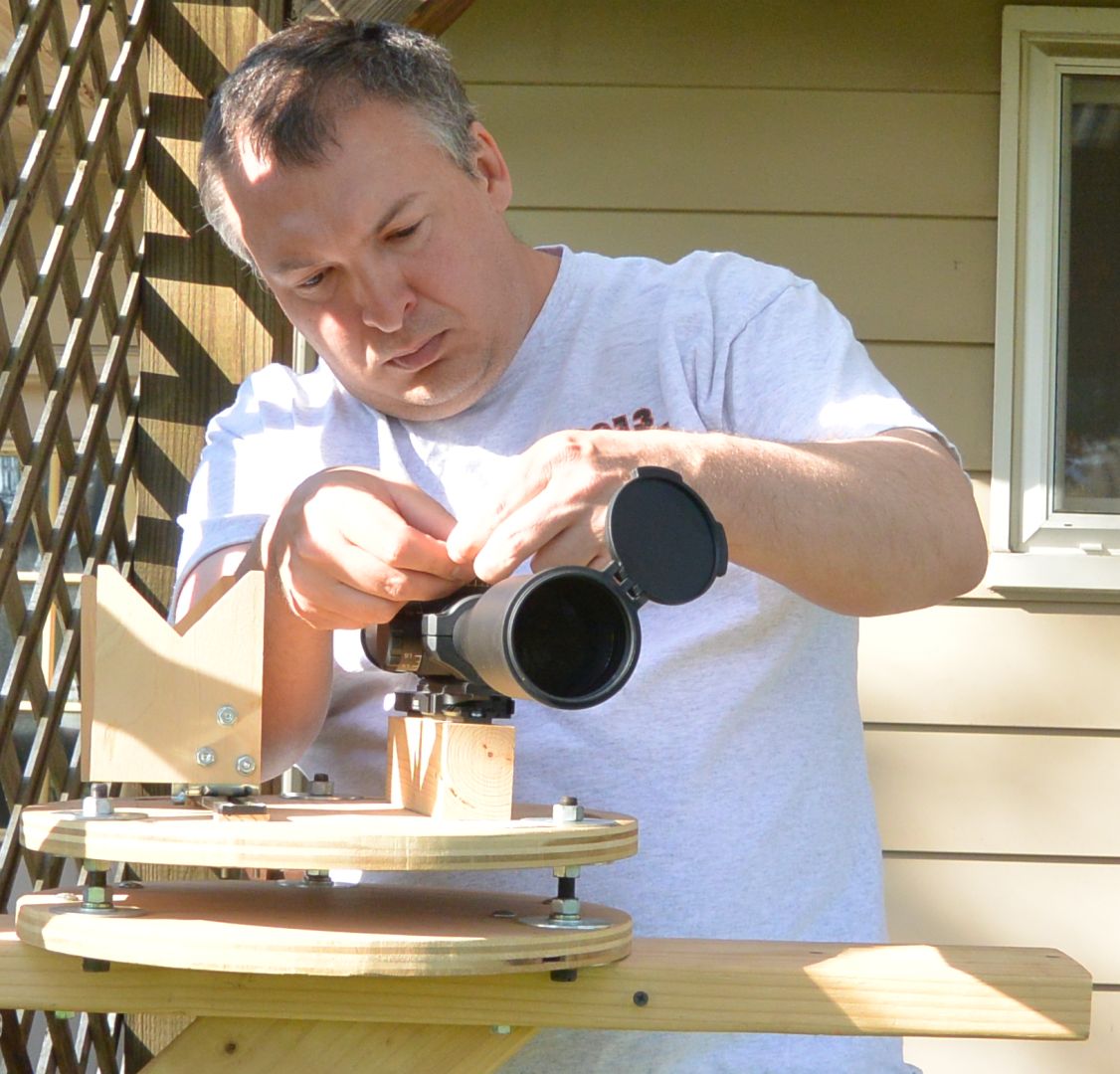
When testing the adjustment magnitude of the ZP5, there was some deviation from ideal. Adjusting up from zero, 10.0 mils on the turret read 9.9 mils on the target and 16.0 mils on the turret read 15.8 on the target. On Frank’s chart, this would be a score of 99%. Going up, the scope’s max adjustment range was 16.5 mils and down it went 15.8 from my zero which means I must have been about .5mils from optical center at my zero. In any case, internally the scope has more than the maximum 28mils that you can use with the double turn turrets. When I ran the windage out to the stop and tested the elevation limits, I was able to get it to stop a little short of it’s centered max range going down but the reticle did not move sideways while adjusting the elevation, so the scope does properly have a stop to prevent the erector from impinging on the body tube and thereby causing inadvertent windage movement at the extremes of elevation range. That is a nice feature not always present in scopes.
As expected, the scope returned to zero properly in testing, and adjusting neither parallax nor power changed the scope’s point of aim. Unlike on the LR scope tested earlier, the ZP5 had no issue with alignment of the markings on the knobs with the indicator. The ticks lined up all the way around.
Summary and Conclusion:
Optically, the Minox ZP5 5-25×56 was excellent, and was particularly well-balanced across the different aspects of performance. I spent a good deal of time spotting and shooting with it in the field and my impressions in real world use were the same. I frequently made out impacts that others’ spotting for the same shooter did not see, or saw with less accuracy. The ZP5 is a pleasure to look through.
The THLR reticle in my test scope did not prove a favorite with me. Though mil at its root, and therefore serviceable, I did not find its unique design features to be particularly useful either in concept or practice. The exception to this was the fine milling scale which proved a good deal better for measuring misses and off-center hits than the main crosshairs. That being said, the ZP5 5-25×56 is also available with either a .2mil Christmas tree reticle called the MR4 or a .2mil ladder design with a nice rapid ranging feature called the MR5. So, the user has quite the variety of reticle choices to suit his tastes, whether that be the unique THLR or the more standard MR4 and MR5 options.
My biggest annoyance with the ZP5 is the .1mil of spline slop in the adjustments. This requires you to always adjust to your firing solution from the same direction or else accidentally add or subtract .1mil from the correction. It took some getting used to this as I am not accustomed to having this constraint and in practice I made some mistakes. In general, the adjustments on the ZP5 did not blow me away. There was a good deal of stiffness variation between different turrets across the two scopes that I tested. The ZP5 also had an adjustment magnitude of 99% and a ~.5 degrees (.15 mils in 16mils travel) clockwise reticle cant. Many of these are minor and common things, but, added all up, the mechanicals were not my favorite.
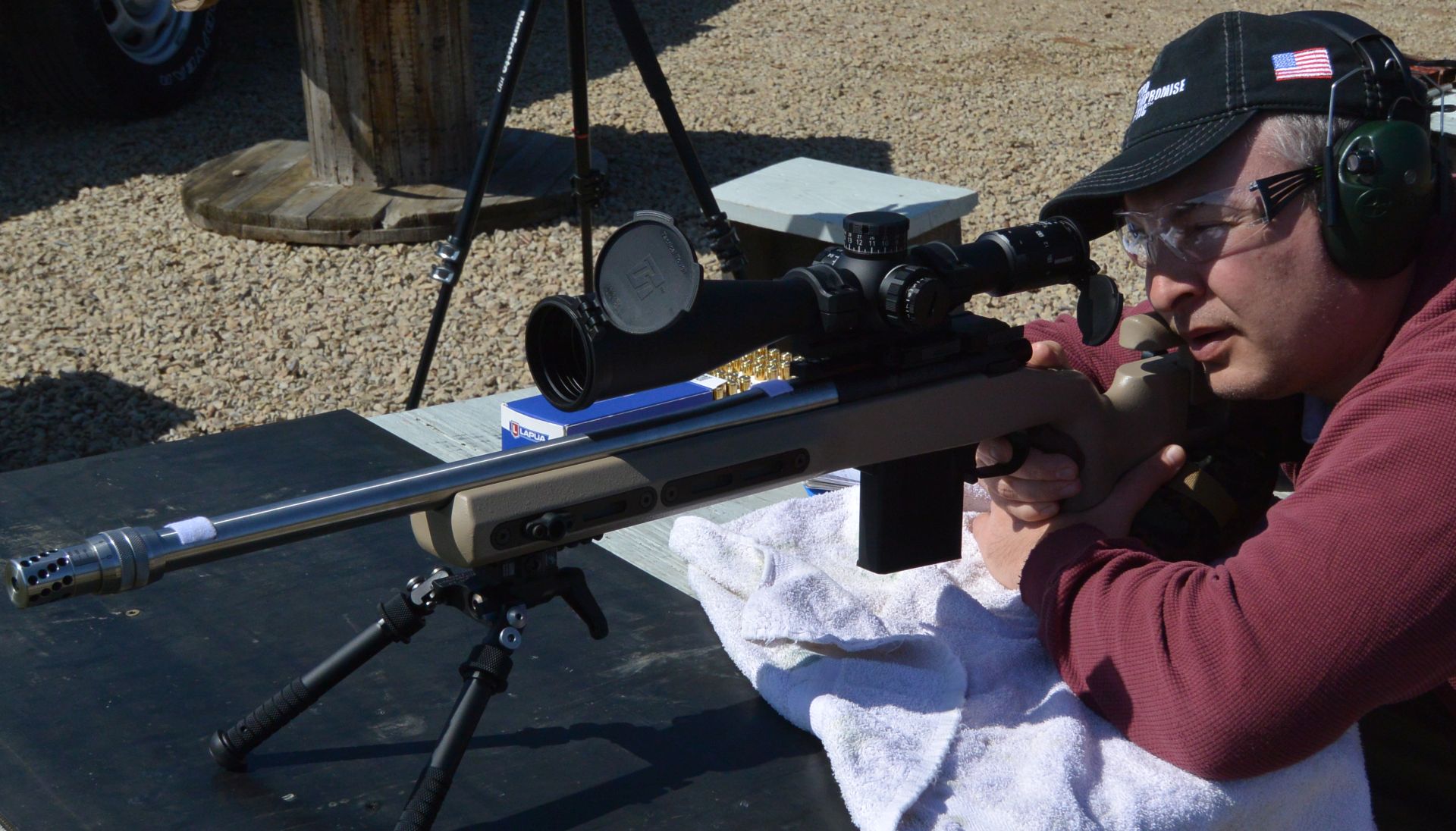
Your Pro and Con Breakdown:
Pros:
– Feature rich 15mil / turn non-rising 2-turn elevation knob with turn indicator
– Smart illumination system (center dot only)
– Excellent optical performance on basically all metrics
– Probably the lowest cost alpha tier optic at $3,200 MAP
– Tennebrex flip caps included
– Made in Germany
Cons:
– large, .1mil spline slop in adjustments, large variance in adjustment stiffness from example to example, and minor adjustment magnitude and cant deviations left me unimpressed with the mechanicals.
– 50M parallax effectively excludes rimfire use
– 10 year warranty is less than the industry norm

